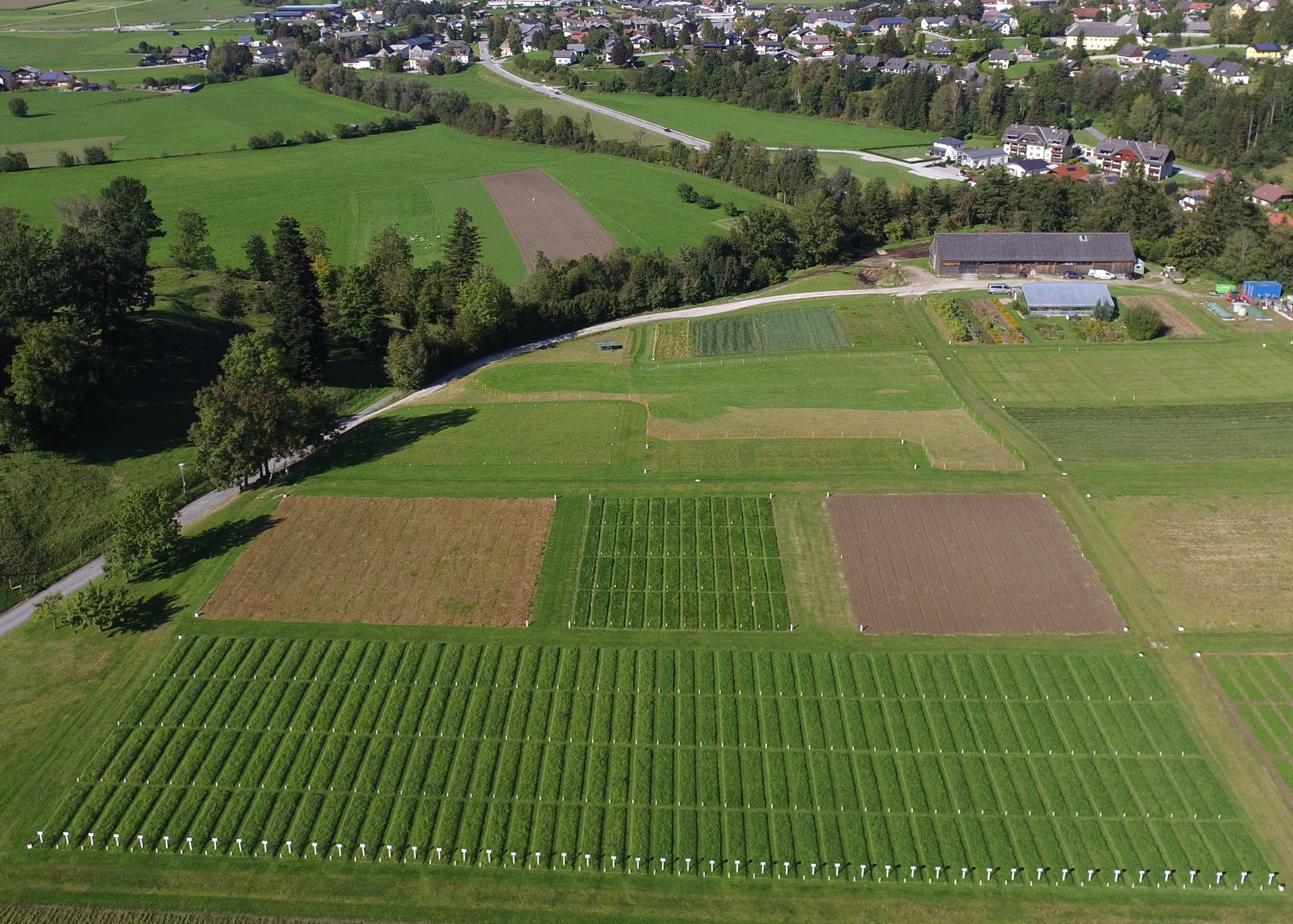Management and plant populations are changing
Increased temperatures, extended growing seasons, increasing drought stress, increasingly frequent heavy rainfall. All of these changes have an impact on our grassland stocks.
Traditional growth and cutting dates no longer match population development. The increase in feed in the spring is increasing, and the yield depression in the summer is much more pronounced in most years than before. On the other hand, the feed increase becomes significantly higher in late summer and autumn. The plant population comes under pressure and changes. In general, the proportion of water-requiring, shallow-rooted, valuable forage grasses is declining. This creates gaps in the population that are filled by deep-rooted herbs and legumes, including critical species such as cowflower and blunt-leaved dock. Open, gappy stands also promote the occurrence of grub damage. All of this affects feed yield and quality if you don't take countermeasures in time.
The goal is a dense, well-structured plant population with a high proportion of drought-tolerant grasses and legumes. Depending on the intensity of use and location, the well-known drought-tolerant species such as cocksfoot, smooth oats, alfalfa, horn trefoil and red clover are suitable for this, but there are also other species with good drought tolerance such as tall fescue or Festulolium (meadow swidden). What performance these new species bring or which varieties of the commercially available species are particularly suitable under the pressures already mentioned, as well as the breeding of climate-resistant red clover are currently the subject of a number of research projects at the HBLFA Raumberg-Gumpenstein. The usefulness of using deep-rooted herbs in grassland seed mixtures (e.g. cultivated varieties of ribwort plantain and chicory) is also being examined.
Climate-tolerant meadows. What can the farmer do?
If the possibilities for improved crop management have been exhausted, optimizing the crop structure through reseeding or reseeding is the order of the day. Necessary measures must always be taken as soon as possible before the problem becomes visible. However, measures that have already been taken preventatively are even more successful.
Gaps and maldeveloped stands can be sustainably improved in their composition through regular reseeding with a suitable reseeding mixture. It is important to adapt the choice of seed mixture to the location and the intensity of cultivation. For example, it makes absolute sense to choose between the different reseeding mixtures offered for up to 3 uses (NA), 4 or more uses (NI), after renovation using strong harrows (NIK) or for dry locations with cutting (NATRO) or with pasture use ( NAWEI) because the range of species and varieties it contains is optimized for the respective conditions.
There is already good practical experience with the regular sowing of red clover in order to enrich more intensively used stocks with this valuable legume and to increase the feed value. However, this measure must be taken regularly as red clover is not persistent in the crop. If the location conditions are suitable, it is also possible to sow alfalfa into existing grassland stands.
Regular reseeding is particularly recommended as a preventive measure to stabilize grassland populations. Reseeding should preferably take place during wet periods, as it works best. Drought-tolerant species also establish themselves better in moist conditions. Wet years are reseeding years!
For new plants, choosing the right seed mix is also very important with regard to location and use. When choosing the right seed mixture, the three cornerstones of seed quality for grassland mixtures should always be taken into account:
- Compliance with the recommended Austrian mixing framework to ensure that the right species are included in the right proportion depending on the climatic area, location and type or intensity of use.
- Only use varieties that have been tested for yield, quality and endurance over many years under Austrian location and climate conditions. Only such varieties (see Austrian variety list, ÖAG variety list) guarantee success in practice.
- Only use seeds that are guaranteed to be free of dock
Priv. Doz. Dr. Andreas Steinwidder in conversation with Dr. Bernhard Krautzer ( HBLFA Raumberg-Gumpenstein)
Link to the article from our media partner landwirt-media.com
Further documents:
- specialist brochure on climate change adaptation based on the podcast series with short and meaningful specialist articles for reading and
- Supplementary slide sets for teaching and advice in all agricultural areas.








